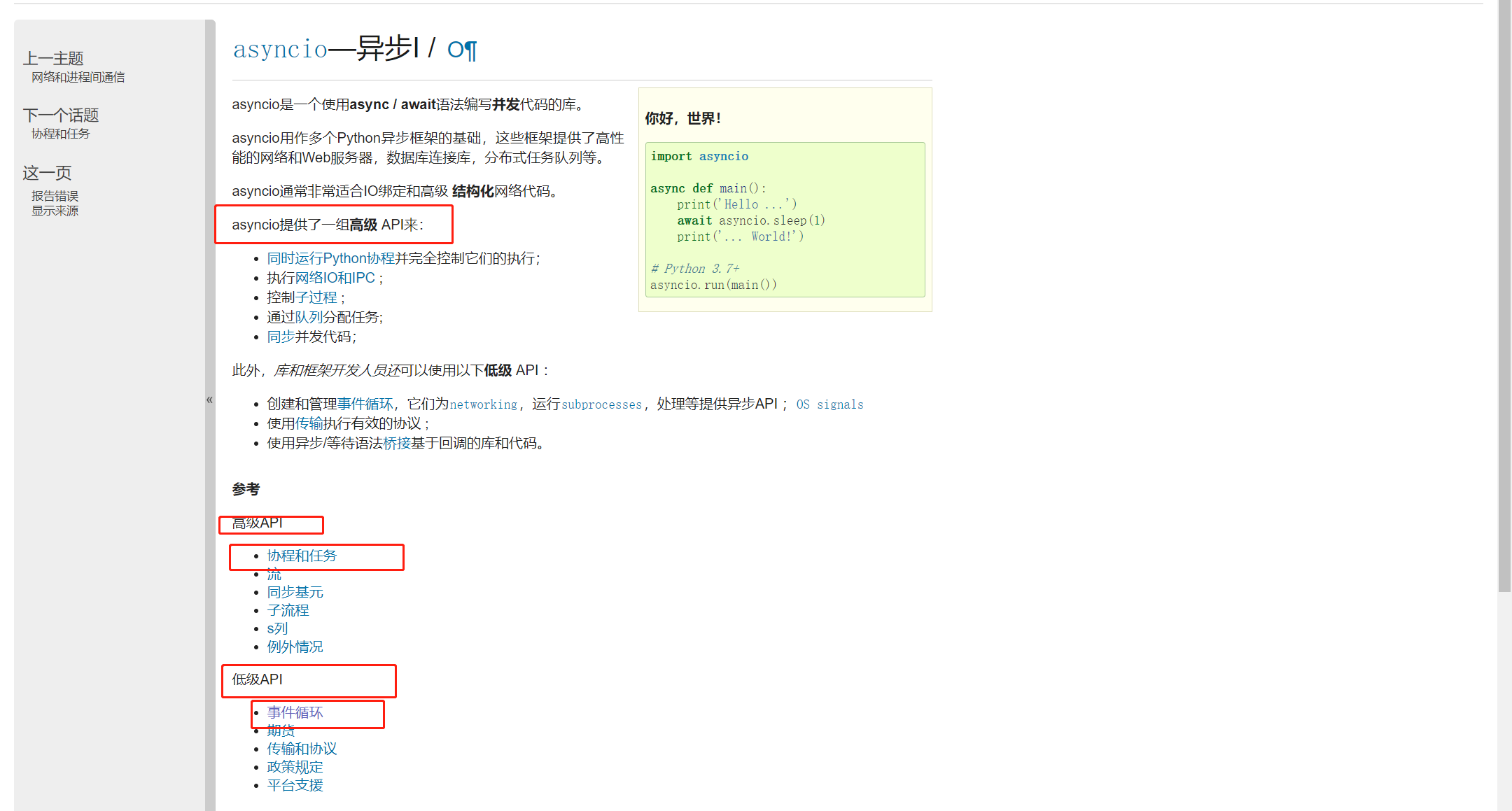解决async 运行多线程时报错RuntimeError: There is no current event loop in thread 'Thread-2'
原来使用:
loop = asyncio.get_event_loop()
task = asyncio.ensure_future(do_work(checker))
loop.run_until_complete(asyncio.wait([task]))
st = task.result()
修改后使用:
添加了
1 2 | new_loop = asyncio.new_event_loop()asyncio.set_event_loop(new_loop) |
1 | 添加后如下: |
1 2 3 4 5 6 | new_loop = asyncio.new_event_loop()asyncio.set_event_loop(new_loop)loop = asyncio.get_event_loop()task = asyncio.ensure_future(do_work(checker))loop.run_until_complete(asyncio.wait([task]))st = task.result() |
根本原因在源码中:
1 2 3 4 5 6 7 8 9 10 11 12 13 14 | def get_event_loop(self): """Get the event loop. This may be None or an instance of EventLoop. """ if (self._local._loop is None and not self._local._set_called and isinstance(threading.current_thread(), threading._MainThread)): self.set_event_loop(self.new_event_loop()) if self._local._loop is None: raise RuntimeError('There is no current event loop in thread %r.' % threading.current_thread().name) return self._local._loop |
在主线程中,调用get_event_loop总能返回属于主线程的event loop对象,如果是处于非主线程中,还需要调用set_event_loop方法指定一个event loop对象,这样get_event_loop才会获取到被标记的event loop对象:
官方文档:https://docs.python.org/3/library/asyncio-eventloop.html
事件循环
源代码: Lib / asyncio / events.py, Lib / asyncio / base_events.py
前言
事件循环是每个异步应用程序的核心。事件循环运行异步任务和回调,执行网络IO操作并运行子流程。
应用程序开发人员通常应使用高级异步函数(例如)asyncio.run(),并且几乎不需要引用循环对象或调用其方法。本部分主要面向需要更好地控制事件循环行为的较低级代码,库和框架的作者。
获取事件循环
以下低级函数可用于获取,设置或创建事件循环:
asyncio.get_running_loop()-
返回当前OS线程中的运行事件循环。
如果没有正在运行的事件循环,
RuntimeError则会引发一个。只能从协程或回调中调用此函数。3.7版中的新功能。
asyncio.get_event_loop()-
获取当前事件循环。如果当前OS线程
set_event_loop()中没有设置当前事件循环并且尚未调用,那么asyncio将创建一个新的事件循环并将其设置为当前事件循环。因为此函数具有相当复杂的行为(尤其是在使用自定义事件循环策略时),所以 在协程和回调中
get_running_loop()首选使用此 函数get_event_loop()。还可以考虑使用该
asyncio.run()函数,而不要使用较低级别的函数来手动创建和关闭事件循环。
asyncio.set_event_loop(循环)-
将loop设置为当前OS线程的当前事件循环。
asyncio.new_event_loop()-
创建一个新的事件循环对象。
需要注意的是行为get_event_loop(),set_event_loop()和new_event_loop()功能都可以通过改变 设置自定义事件循环政策。

asyncio 官方文档地址https://docs.python.org/3/library/asyncio.html







【推荐】国内首个AI IDE,深度理解中文开发场景,立即下载体验Trae
【推荐】编程新体验,更懂你的AI,立即体验豆包MarsCode编程助手
【推荐】抖音旗下AI助手豆包,你的智能百科全书,全免费不限次数
【推荐】轻量又高性能的 SSH 工具 IShell:AI 加持,快人一步
· 10年+ .NET Coder 心语,封装的思维:从隐藏、稳定开始理解其本质意义
· .NET Core 中如何实现缓存的预热?
· 从 HTTP 原因短语缺失研究 HTTP/2 和 HTTP/3 的设计差异
· AI与.NET技术实操系列:向量存储与相似性搜索在 .NET 中的实现
· 基于Microsoft.Extensions.AI核心库实现RAG应用
· 10年+ .NET Coder 心语 ── 封装的思维:从隐藏、稳定开始理解其本质意义
· 地球OL攻略 —— 某应届生求职总结
· 提示词工程——AI应用必不可少的技术
· Open-Sora 2.0 重磅开源!
· 字符编码:从基础到乱码解决